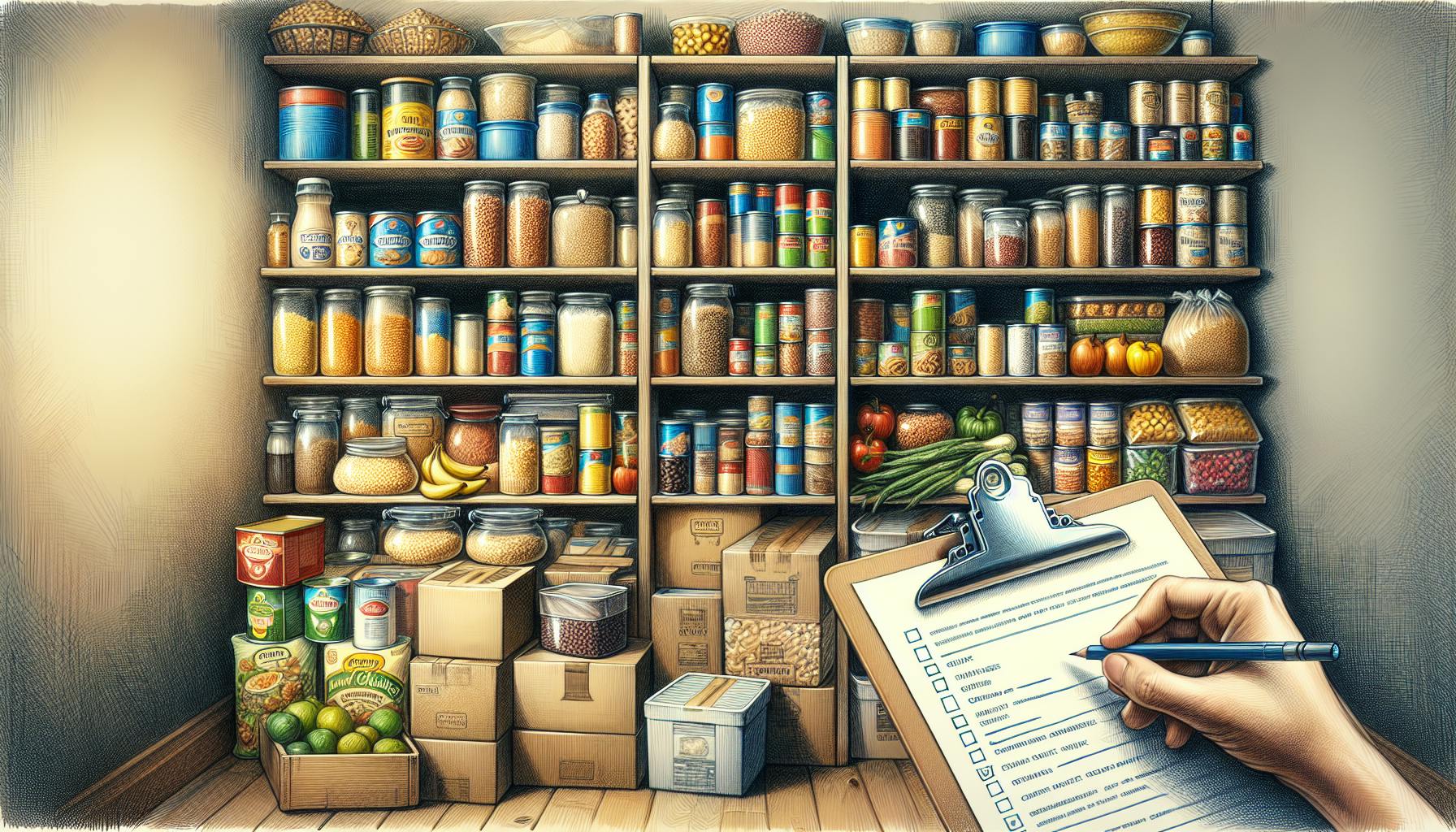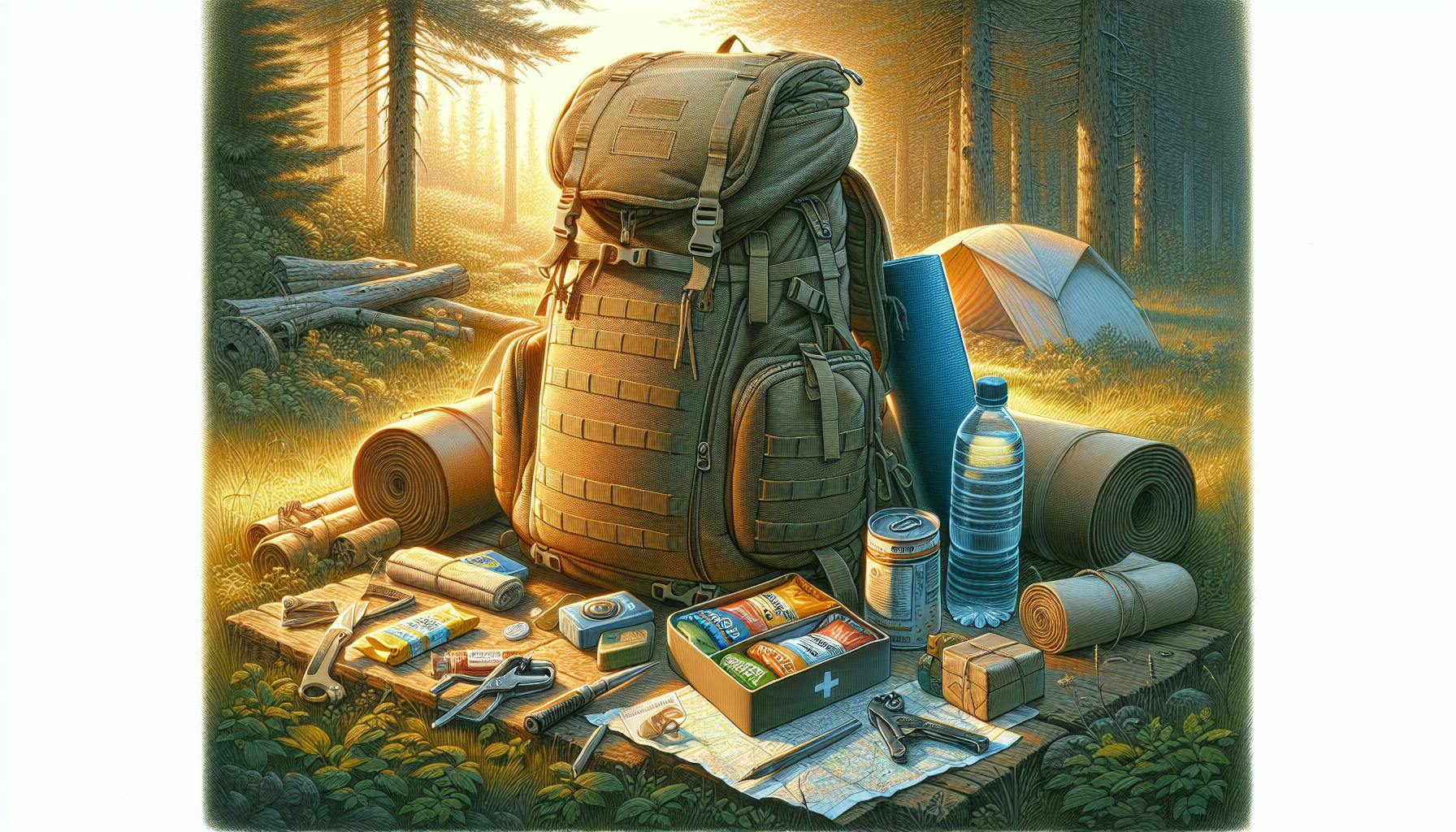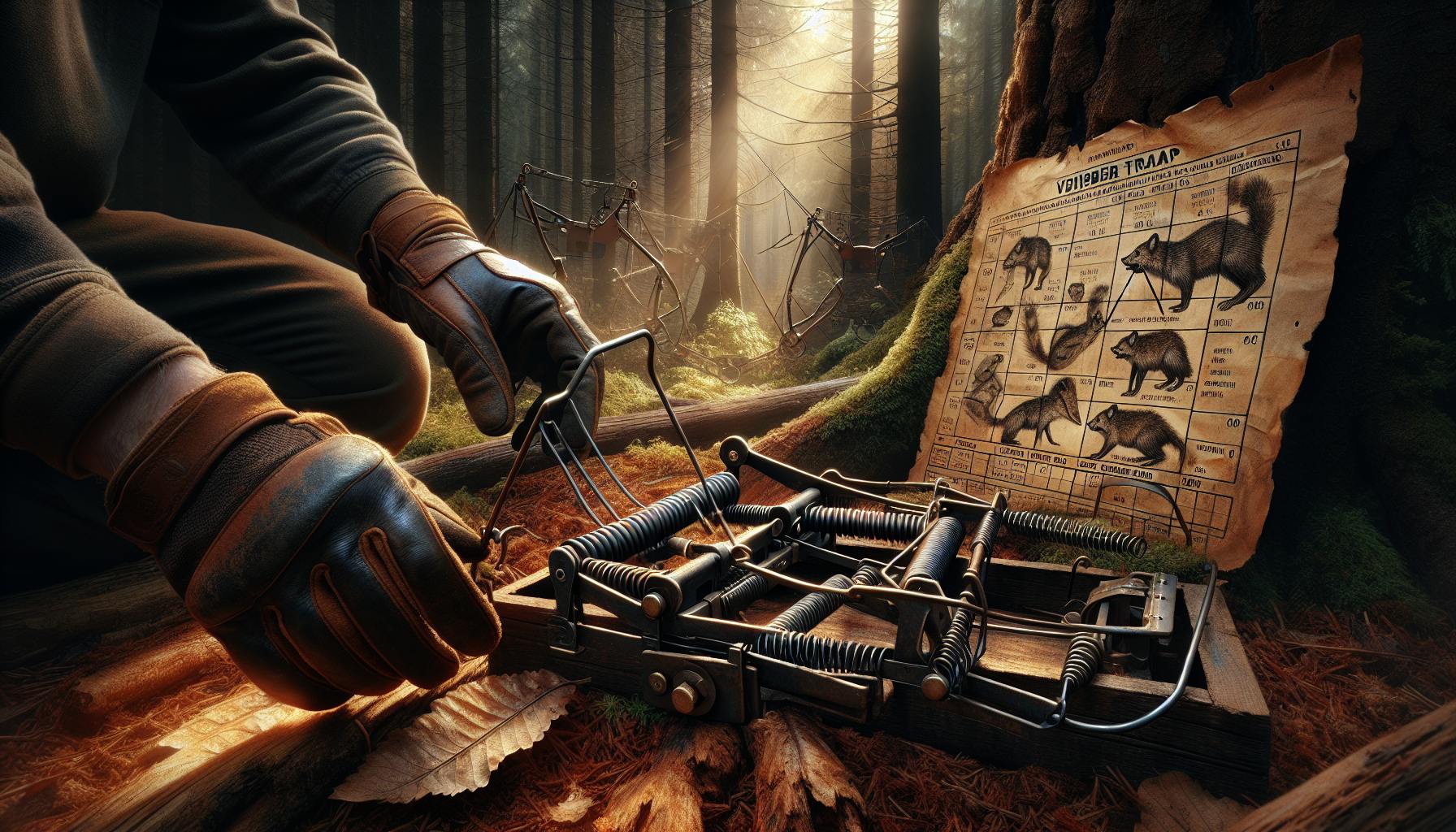When it comes to long term food storage, most people would agree it can be overwhelming to know where to start.
Luckily, with some key tips on storage methods, best foods, and common mistakes, you can effectively begin prepping your stockpile while avoiding frustration and waste.
In this post, you'll get budget-friendly advice and practical techniques to set you up for long term food storage success.We'll cover everything from ideal storage containers to building a rotation system, and the best foods to prioritize for nutrition and affordability.
Introduction to Long Term Food Storage
Long term food storage involves stockpiling non-perishable foods that can last for years, providing a buffer in case of emergencies or hard times. As preppers, having long-term stores allows us to be self-reliant and prepared for disasters - whether natural or manmade.
This article will cover the basics of getting started with long term food storage. We'll define what it is, highlight key benefits, and provide tips on setting realistic goals tailored to your household's unique needs.
Defining Long Term Food Storage
Long term food storage differs from keeping a basic pantry or short term emergency supplies. While pantries may have enough for a few weeks, long term storage aims for at least a 1-2 year supply minimum. The foods are specially processed and packaged to achieve shelf lives of 5-30 years.
Examples include freeze-dried entrees, dehydrated fruits/veggies, white rice, beans, grains like wheat/oats, and more. Many of these foods come in #10 cans or mylar bags with oxygen absorbers for max freshness.
Benefits of Long Term Food Preparedness
Having long-term emergency food reserves delivers essential peace of mind. It protects against:
- Natural disasters like earthquakes, floods, blizzards. Roads and supply chains can be disrupted for weeks.
- Job loss or financial hardship. Stores of food reduce the stress of getting by if income drops.
- Social collapse, wars, pandemics. Severe outbreaks can lead to quarantines, supply shortages, riots and instability.
In any disaster scenario, grocery shelves empty fast. Having your own long term food storage alleviates reliance on unstable external systems.
Setting Appropriate Goals
Those new to building long term food storage should set realistic goals based on:
- Household size - Stockpile enough for everyone for 1-2 years minimum. A family of four needs more than a single person.
- Available storage space - Basements, closets and pantries can house supplies.
- Budget - Build stores gradually if needed. Buy extra each grocery trip.
- Consumption rates - Keep tabs on how quickly you go through foods.
With the right plan tailored to your situation, long term food storage is an achievable and vital part of emergency preparedness.
What food is best for long-term storage?
When it comes to best long term food storage, focus on shelf-stable foods that are nutritious and will last. Some good options to consider include:
-
Canned meats like tuna, chicken, salmon, etc. Canned meats can last 2-5 years unopened. Once opened, transfer to an airtight container and use within a few days.
-
Rice and beans. Both are inexpensive, nutritious, and can be stored long-term if properly packaged. White rice can last 30 years when stored with oxygen absorbers in airtight containers.
-
Ready-to-eat cereals or pasta mixes. Opt for whole grain varieties and store in airtight containers. They can last several years.
-
Dried fruits and vegetables. Great for adding vitamins and fiber. Store in cool, dark places and they can last up to 25 years.
-
Other shelf-stable foods like granola bars, nuts, trail mixes, and crackers. Store in airtight containers and use within a year or two.
When putting together your long term food storage, focus on nutrient density, variety, and your personal tastes. Also be sure to properly store foods for maximum freshness and shelf life. With some planning, you can build up a robust food stockpile.
What food storage lasts the longest?
When it comes to long term food storage, there are certain foods that have naturally longer shelf lives than others. Focusing your prepper pantry on these foods can help ensure you have nutritious options available even years into the future.
Fruits, Vegetables, and Tubers
Not all fresh produce will shrivel up immediately. Potatoes, winter squash, onions, and garlic can last for months if stored properly in cool, dark places. Canned and jarred fruits and vegetables also have multi-year shelf lives as long as the seal remains intact.
Nuts and Seeds
Most nuts and seeds keep their nutrients for upwards of a year when stored in air-tight containers. Almonds, walnuts, sunflower seeds, and more are great additions to your long term food prep.
Jerky
Homemade or commercially packaged jerky can last 1-2 years when properly stored, thanks to the dehydration process that removes moisture. Varieties like beef, turkey, salmon, and more make great high-protein snacks.
Focus on these and other non-perishable foods with innate longevity to build up your long term food reserves. Pay special attention to storage methods for each item to maximize shelf life. With the right foods and the right storage, you can feel confident your pantry will stand the test of time.
What is the best material for long-term food storage?
When it comes to long-term food storage, the material your containers are made of is crucial for keeping food fresh and preventing spoilage. The best materials for long-term storage are:
Glass - Glass containers are inert, meaning they don't interact with food. This prevents food from absorbing smells or flavors. Glass also provides an excellent barrier against oxygen, moisture, light, and bacteria. The major downside is that glass is heavy and can break. However, glass storage jars and containers last indefinitely if cared for properly.
Plastic - Food grade plastic like HDPE and PET are affordable, lightweight options perfect for bulk dry goods storage. Ensure any plastic bins or containers you use are BPA-free and made specifically for food storage. Some plastics can warp, crack, or leach chemicals over time with temperature fluctuations.
Stainless Steel - Stainless steel is extremely durable, impermeable to air and moisture, and resistant to corrosion. Containers made of stainless steel will last a very long time. The drawback is stainless steel can be more expensive upfront.
When selecting containers, consider durability, sealing ability, opacity, weight, and cost. The lid material is also important to evaluate, as plastic lids can become brittle and degrade faster than glass or stainless steel containers. Prioritize materials that will protect your food for many years to come.
What is the best long-lasting survival food?
When building an emergency food supply, focus on nutritious, non-perishable foods with a long shelf life. Some good options include:
Peanut Butter
An excellent source of protein and healthy fats. Opt for natural peanut butter without hydrogenated oils. Stays fresh for 3-4 months once opened when properly stored.
Whole-Wheat Crackers
Provide carbohydrates and fiber. Look for low/no salt varieties. Can last 6-9 months in airtight containers. Pair with peanut butter for protein.
Nuts and Trail Mixes
Great for snacks. Go for raw, unsalted nuts. Trail mixes expand variety. Store in cool, dark places to preserve freshness. Lasts several months.
Cereal
Choose whole grain, low sugar cereals and store in airtight containers. Stays fresh for 6-12 months. Combine with shelf-stable milk.
Granola and Protein Bars
Convenient, nutrient-dense options to stash. Seek bars with limited ingredients. Can last up to 9 months stored properly. Prioritize calories and protein.
Dried Fruits
Raisins, apricots, apples - provide fiber, vitamins. No need to refrigerate. Lasts up to 12 months. Watch added sugars in flavored varieties.
Canned Meats
Canned tuna, chicken, salmon etc. are lean protein sources, if stored correctly can last 2-5 years. Seek low sodium options packed in water.
Canned Fruits and Vegetables
Nutritious, affordable addition. Look for reduced sodium, no added sugar. Stays fresh 2-5 years when stored in cool, dark place.
sbb-itb-b932644
Long Term Food Storage Ideas and Techniques
Best Long Term Food Storage Containers
When choosing containers for long term food storage, opt for food-grade plastic buckets or Mylar bags. These allow for a tight seal to protect against oxygen, moisture, insects, and rodents. High quality vacuum sealers are also useful for removing oxygen before sealing food in Mylar bags. Glass jars work for some items but are heavier and more prone to breaking. Ensure any containers you use are BPA-free.
When storing grains, beans, and other hard foods, use oxygen absorbers inside buckets or bags. For moist foods like nuts or produce, use desiccants instead to absorb excess moisture. Always label containers with contents and date for easy identification. Store containers in a cool, dark place like a basement or cellar.
Creating a Stable Storage Environment
The ideal storage conditions for maximizing most foods' shelf lives are temperatures between 40-60°F with a relative humidity around 40%. Light and fluctuations in temperature or humidity can degrade food over time. Ensure storage areas have good ventilation and air circulation. Consider adding insulation around containers to buffer temperature changes if needed.
Monitor conditions with a thermometer and hygrometer. Use techniques like coolers, insulation blankets, or root cellars to regulate storage spaces for long term needs. Having stable conditions, even if imperfect, is more important than chasing "perfect" metrics that fluctuate.
DIY Long Term Food Storage Solutions
With some creativity, many everyday household items can be repurposed for food storage. For example, use kitty litter buckets with gamma seal lids for an airtight container. Wrap bricks or jugs of water in blankets or sleeping bags, then place food containers against them to create a thermal mass shielding food from temperature swings.
Build storage racks from lumber to efficiently organize containers. Use heavy duty shelving for holding #10 cans or 5+ gallon buckets. A little planning and elbow grease can yield effective DIY solutions for long term storage.
Maintaining Quality and Nutrition
Certain storage methods like freezing, dehydrating, pickling, and canning can preserve nutritional value for years if done properly. Consider a root cellar for fresh produce. When using oxygen absorbers and moisture controls, regularly check containers as seals can fail over very long durations.
Incorporate stored foods into regular meals before replenishing with new stock. This rotation ensures quality and prevents waste from spoilage. Overall, modern storage materials and techniques allow for years of shelf life with minimal nutritional degradation if properly packaged and stored.
Cost-Effective Bulk Food for Long-Term Storage
When building your long-term food storage, it's important to find cost-effective ways to purchase nutritious ingredients that will last 10-30 years. Here are some tips:
Cheap Food with Long Shelf Life
Focus on affordable pantry basics like rice, beans, oats, wheat, pasta, olive oil, vinegar, soy sauce, bouillon cubes, and condiments like salt, pepper, spices, etc. Opt for whole ingredients over processed foods when possible.
Buying in Bulk: Strategies and Savings
- Shop at warehouse stores for large bags of grains, beans, pasta, etc. Repackage into smaller airtight containers at home.
- Watch for sales on shelf-stable items. Stock up on extras to store.
- Buy directly from farms or CSAs for discounts on bulk quantities of produce to preserve.
- Split bulk purchases with friends to save money.
Budget-Friendly Preservation Methods
- Canning produce or meats allows long-term storage at low cost.
- Dehydrating via oven, food dehydrator, or solar methods preserves fruits, veggies, and meats.
- Pickling vegetables in vinegar is very affordable and yields long-lasting results.
- Freezing meats when on sale allows long-term storage if power is reliable.
Minimizing Waste with Smart Purchasing
- Take inventory before shopping to avoid over-purchasing.
- Look for best-by dates furthest in future when selecting items.
- Purchase amounts based on realistic consumption estimates.
- First in, first out organization system helps avoid waste.
Using cost-saving strategies like buying in bulk, preserving through canning/dehydrating, and minimizing waste, you can build an affordable long-term food storage to be prepared for any situation.
Expanding Through Preservation
Preserving perishables like dairy, meat, and produce can help expand your long-term food storage capabilities while also reducing waste. There are several effective methods for safely preserving foods at home.
Canning Fruits and Vegetables
Hot water bath canning allows you to safely bottle high-acid foods like fruits, jams, salsa, pickles, and more. When done properly, canning enables storage for 1-2 years.
- Start with high-quality fresh produce free of bruises or mold.
- Use proper canning jars, lids, rings - check for defects.
- Follow validated recipes and processing times precisely.
- After processing sealed jars, check that the lid is concave and cannot be pressed down.
With some basic supplies and training, water bath canning is an easy way to preserve summer's bounty for enjoyment all year.
Dehydrating Fresh Produce
Investing in a quality dehydrator enables long-term storage of dried fruits, vegetables, and herbs for 1-2 years.
- Select produce at optimal ripeness - not under or overripe.
- Wash, peel, seed, slice uniformly for even drying.
- Use proper drying temperatures based on ingredients. Herbs 95-115°F, fruits/veggies 125-155°F.
- Condition dried goods at room temp in sealed containers before storage.
Dried produce takes up little space and rehydrates well for cooking. Expand variety in your long-term food prep by dehydrating seasonal abundance.
Freezing For Long Term Use
While freezing is often thought of for short-term storage, with proper handling and packaging, frozen foods can safely last 1-2 years.
- Use high-quality freezer bags, aluminum foil, or airtight rigid containers.
- Exclude as much air as possible and seal tightly.
- Label with contents and date before freezing.
- Maintain a constant 0°F temperature with minimal opening to prevent frost crystal damage.
Freezing is an easy way to preserve meat, prepared meals, baked goods and more with minimal quality loss over an extended duration.
Avoiding Critical Mistakes in Long Term Food Storage
Rotating Your Supply
To avoid wasting food and money due to expiration, it's essential to implement a first in, first out (FIFO) rotation system. When adding new items to your stockpile, place them behind older items so the older food gets used first. Label all containers with purchase dates and plan meals around what needs to be eaten soonest.
Create an inventory list with expiration dates for reference. Designate a specific area for food about to expire to ensure it gets seen and eaten.
Proper Inventory Management
Keep an up-to-date catalog of all emergency food items in your stockpile. Track information such as:
- Product name
- Purchase date
- Expiration date
- Storage location
- Quantity
Update inventory levels each time you use something. Review it monthly to see what needs replenishing and watch for upcoming expiration dates.
Take a full physical inventory yearly to ensure accuracy and replace anything compromised.
Learning From Trial and Error
When first building a long term food storage, mistakes happen. Botulism is a real concern if the wrong foods get canned at home. I learned to research thoroughly and follow safety guidelines exactly.
It's easy to get overambitious and buy more than you can properly store or rotate. I wasted money on bulk items that went bad. Now I only buy what fits my family's needs and usage rate.
With practice, you learn what works for your situation. Be diligent but don't get down on yourself. Every misstep makes you more prepared.
Final Tips and Next Steps
As you continue building your long term food storage, here are some final tips to keep in mind:
Ongoing Goals and Milestones
- Set specific goals for expanding your reserves over time. Aim to have a 1-month supply within 6 months, 3 months within a year, etc.
- Make a plan for rotating and replenishing items before they expire. FIFO (first-in, first-out) is a good system.
- Take inventory every 6-12 months and look for gaps or shortages to address.
Additional Emergency Planning
- Store extra water and have purification methods ready. Calculate based on family needs.
- Consider alternative cooking sources if utilities are disrupted. Camp stoves, solar ovens, etc.
- Have a contingency plan for security, communication, sanitation, and medical needs.
Building a Like-Minded Community
- Attend local prepper meetups to connect with others interested in self-reliance.
- Identify people with complementary skills and resources to share if needed.
- Stay up to date on local events and legislation that could impact your preparation.
Continually learning, planning, and connecting with others will help strengthen your ability to provide for yourself and loved ones even in difficult times. Start small, but stay consistent in building your preparedness over time.


